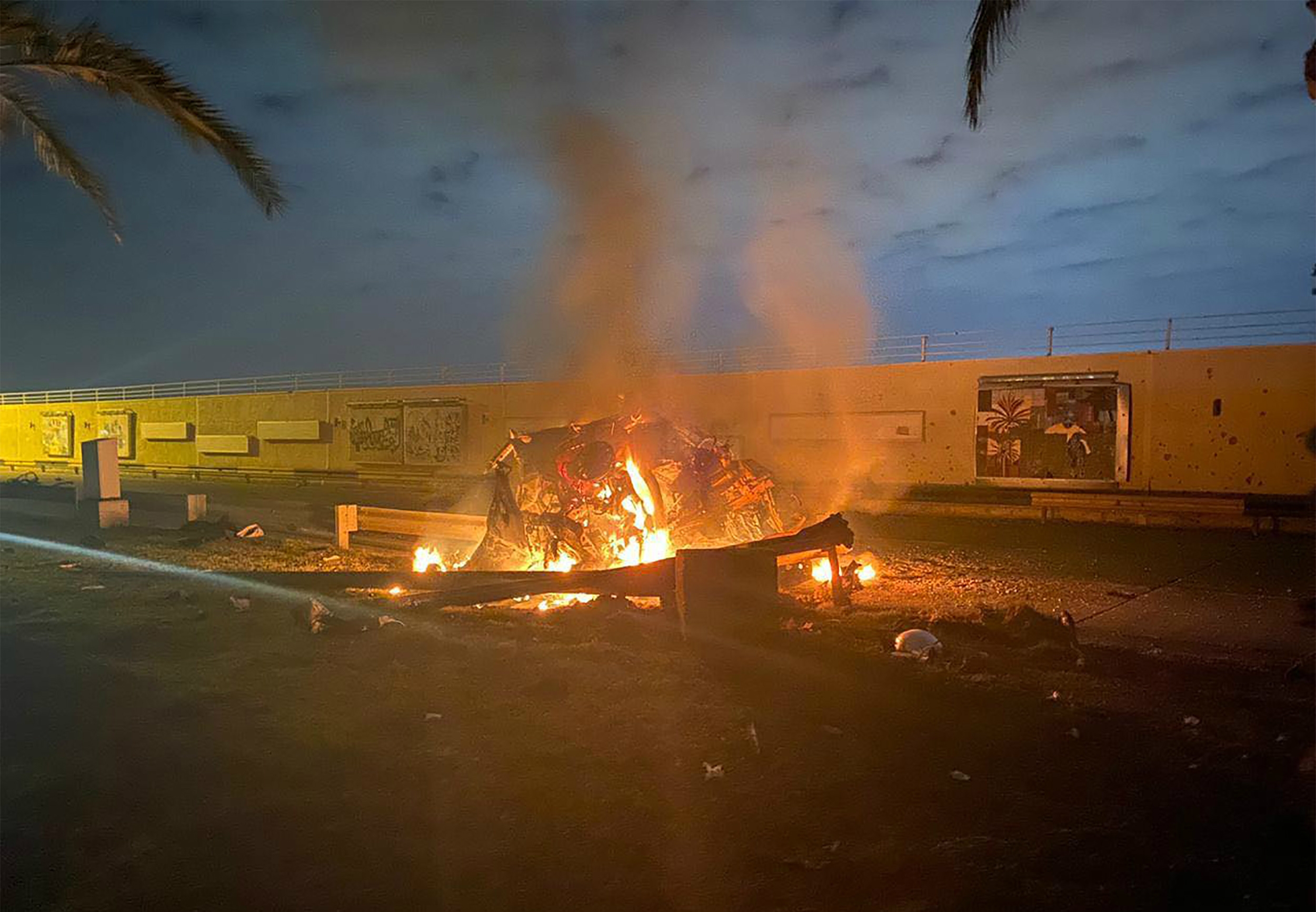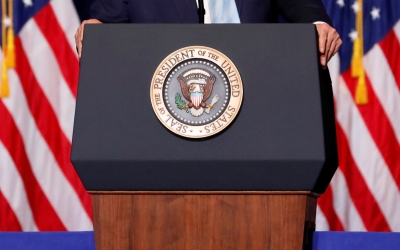The assassination of Soleimani and al-Muhandis, the most likely scenario

According to several news reports, just before his assassination in the early hours of Friday, Qassem Soleimani, the head of the Iranian Revolutionary Guards' Quds Force, had been planning to wage a series of attacks on US targets within Syria and Iraq.
It would seem, according to these reports, that Soleimani's aim, and the aim of those who stand behind him in Tehran's regime – perhaps also the aim of their subordinates in Iraq - was to initiate a limited escalation against the United States.
The assumption was that such an escalation would soon be contained once the Iraqi political landscape had been preoccupied with a more serious event than the popular protest movement that seemed to direct its wrath against Iranian intervention in Iraq.
'Undoubtedly, by ordering the assassination of Soleimani, Trump sought to divert attention away from the impeachment proceedings'
What distinguished that popular protest movement was its non-sectarian, non-partisan nature.
The identity of the dynamic was purely Iraqi, and its demands were clear, direct and reasonable. Yet, it sent the Iranians panicking.
They were concerned that the protest movement was undermining Baghdad's ruling elite that was loyal to them, an elite accused by the masses of corruption and of comprising Iraq for the benefit of foreign powers.
That is why the Iranians and their subordinates in Baghdad saw fit to accuse foreign parties, including the US, of instigating and supporting the popular protests, which in essence called for no more than an end to despotism and corruption.
A grave development of some sort had become necessary in order to divert attention. Indeed, just days before the attack at Baghdad's international airport, the flames of the popular protest movement seemed to by dying out.
The focus had shifted entirely to the confrontation gradually escalating between the Americans and the pro-Iran factions within the ruling regime in Baghdad.
These factions were an integral part of the Popular Mobilisation Forces of which Abu Mahdi al-Muhandis, the second-most important casualty of Friday's attack, was deputy commander.
The escalation reached a climax with a "coordinated" mob attack on the US embassy in Baghdad, a scene very much reminiscent of the storming of the US embassy in Tehran more than 40 years ago (a crisis that began on 4 November 1979).
The prospect of a repeat of that 444-days drama seemed to enrage the White House.
Conspiracy theories
The developments of the past few weeks prove beyond doubt the fallacy of the claim that the Iranians and the Americans had always been in cahoots.
This populist notion stems from a belief in conspiracy theories quite rampant in some parts of the Arab world. In fact, since the Khomeini-led Iranian revolution toppled the Shah's regime in 1979, Iran and the US have been staunch enemies.
Yet, while it is likely at times that the interests of these two conflicting powers criss-cross, the relationship between them is far from amicable or concord-based.
Conflicting or competing powers may, unwittingly, create opportunities for each other, either out of necessity or as a result of miscalculation.
It is just regrettable that some people prefer, for simplicity, to interpret these rather complex interactions in terms of a plot concluded in secret by the concerned parties.
However, it is undeniable that the deliberate escalation against the US by the pro-Iran Iraqi factions, with the aim of pulling the rug from underneath the feet of pro-democracy protesters across Iraq, coincided with a predicament the White House was going through.
Namely, the result of the decision by Congress to proceed with impeachment proceedings against Donald Trump who has been accused of abusing his presidential powers.
Undoubtedly, by ordering the assassination of Soleimani, Trump sought to divert attention away from the impeachment proceedings.
This is quite similar to the tactic then-US president Bill Clinton resorted to when he was faced with the threat of impeachment over the Monica Lewinsky scandal.
Unexpected costs
It would, therefore, be safe to assume that both parties, the Iranians and the Americans - and each for their own needs and purposes - needed an escalation, but one that was limited in both scope and duration.
Yet, it did not occur to the Iranians that the cost of such an escalation would be the slaying of one of their most important military figures.
Nor did it occur to the Iraqis that such an escalation would cost them someone as significant and as prominent as Muhandis.
As such, it would be possible to conclude that the escalation plotted by both Soleimani and Muhandis was not in fact part of any struggle against the US presence in Iraq, or for that matter in the region as a whole, a presence whose benefits were mostly reaped by the Iranians and their lackeys in Iraq.
Their plot was instead aimed at undermining the protest movement that has gripped Iraq over the past few months and that came close to bringing down the very regime that was established by the Americans, only to be infiltrated and controlled by the Iranians.
In other words, the Iraqi population was rising against a regime that turned Iraq into a causeway for the Iranians to march towards Syria and the shores of the Mediterranean.
It might be too early to predict where the current escalation will lead. Yet, it is obvious so far from the hectic diplomatic efforts, that neither Tehran nor Washington – or even Baghdad for that matter – wishes for the escalation to continue.
Therefore, and unless an unforeseen development adds fuel to the fire, it is very likely that the concerned parties will head towards a settlement and will seek a containment - as the cost of failing to achieve a truce might be too high for everyone concerned.
Middle East Eye propose une couverture et une analyse indépendantes et incomparables du Moyen-Orient, de l’Afrique du Nord et d’autres régions du monde. Pour en savoir plus sur la reprise de ce contenu et les frais qui s’appliquent, veuillez remplir ce formulaire [en anglais]. Pour en savoir plus sur MEE, cliquez ici [en anglais].







